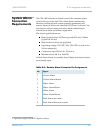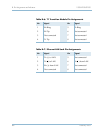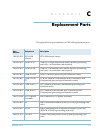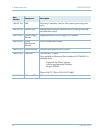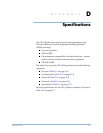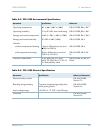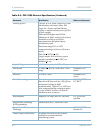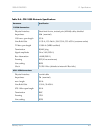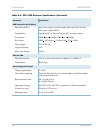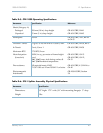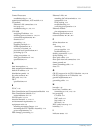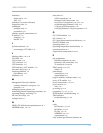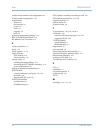
February 2003 I-3
1000-A2-GN22-00 Index
indicators
alarm status
3-34
APP 3-34
indicators. See status indicators
inoperative fans
5-2
installation
multiple units
3-7
precautions 3-17
interface-specific connections B-2
IP address 3-34
changing 3-35
default 3-34
J
JetCraft terminals 3-34
connecting to CPX-1000 3-34
L
labeling cables 3-26, 3-30
LAN hub 3-25
LAN routers 3-25
LCC connector 3-17
LCD connector 3-17
LED indicators, ACE module 2-33
line cards, hot swap 5-11
location guidelines 3-8
plant battery 3-18
loopbacks 4-14
M
Management Processor Module
controls, indicators, and ports
2-19
generally 2-17
managing remote systems 3-25
monitoring internal operating parameters B-7
mounting flanges, reversing 3-12
MP card, hot swap 5-10
multiple units 3-7
N
NEBS, CPX-1000 meets requirements of D-1
NEBS2000 racks 3-8, 3-12
networks B-2
ATM connections 3-24
Ethernet LANs connections 3-25
host Class 5 connections 3-26, 3-29, 3-30
troubleshooting Ethernet LANs 4-11
verifying ATM connections 3-32
verifying Ethernet LAN port operation 3-34
O
OC-3 ATM Module 2-33
OC-3 cables 3-32
OC-3 port data transmission indicators 2-33
Octal T1 Module 2-20
operating status 2-33
operating temperature and humidity 3-7
operation alarms B-7
output alarm connections B-4, D-4
P
pin assignments
Ethernet connection
B-4, B-8
Ethernet LAN connections 3-25
T1 module B-5, B-6, B-8
PING testing 3-34, 3-35
failed 4-11
plant battery
connecting to
3-16
requirements B-4
plug-in modules, indicator states 3-33
ports, ACE module 2-33
power connections 3-16, 3-17
power sources 3-8
fans 3-34
powering up 3-32
precautions 3-5, 5-3, 5-7, 5-8
PSTN Module, troubleshooting 4-9
PWR indicator
troubleshooting
4-7, 4-8
R
racks
Bell Narrow
3-8, 3-12
Bell Wide 3-8, 3-12
EIA310 3-8, 3-12
NEBS2000 3-8, 3-12
requirements 3-8
relay contact specifications (alarms) B-7



